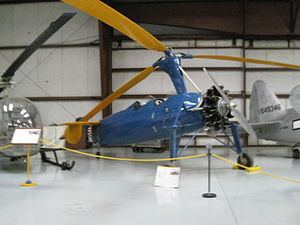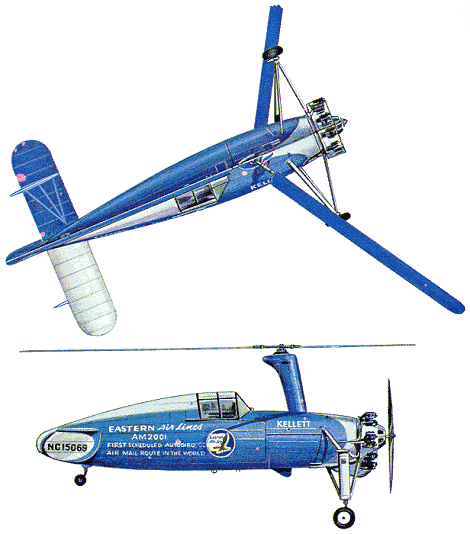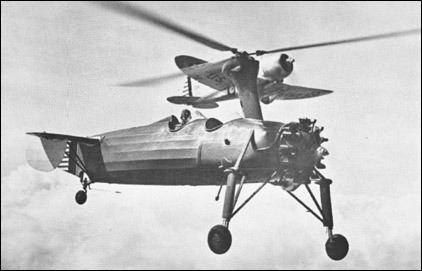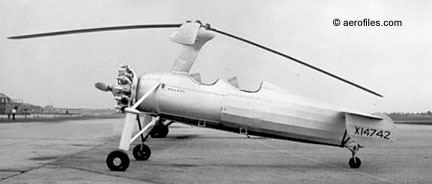Top speed 201 km/h First flight 1934 | Length 8.79 m | |
Manufacturer Kellett Autogiro Corporation | ||
Mini r c autogyro inspired by the kellett kd 1 flying outdoor
The Kellett KD-1 was a 1930s American autogyro built by the Kellett Autogiro Company. It had the distinction of being the first practical rotary-wing aircraft used by the United States Army and inaugurated the first scheduled air-mail service using a rotary-wing aircraft.
Contents
- Mini r c autogyro inspired by the kellett kd 1 flying outdoor
- Development
- Variants
- Operators
- Specifications KD 1B
- References

Development

Using the experience gained in building Cierva autogyros under licence the Kellett Autogiro Company developed the KD-1 which was similar to the contemporary Cierva C.30. It had two open cockpits, a fixed tailwheel landing gear and was powered by a 225 hp (168 kW) Jacobs L-4 radial engine. After testing of the prototype a commercial variant designated the KD-1A was put into production. The KD-1A had a three-bladed rotor with folding blades and a number of minor detail improvements. A KD-1B which was a KD-1A with an enclosed cockpit for the pilot was operated by Eastern Airlines and inaugurated the first scheduled rotary-wing air-mail service on 6 July 1939.

In 1935 the United States Army bought a KD-1 for evaluation and designated it the YG-1, a second aircraft followed which had additional radio equipment and was designated the YG-1A. These two aircraft were followed by a batch of seven designated YG-1B. In 1942 seven more were bought for use in the observation role as the XO-60. Six XO-60s were re-engined with 300 hp (224 kW) Jacobs R-915-3s and re-designated YO-60. One YG-1B was modified with a constant-speed rotor and was re-designated the YG-1C, it was later re-engined with the more powerful R-915 and re-designated again as the XR-2. The XR-2 was destroyed by rotor ground resonance problems and the evaluation was continued with another modified YG-1B designated the XR-3.
Variants



Operators
Specifications (KD-1B)
General characteristics
Performance
